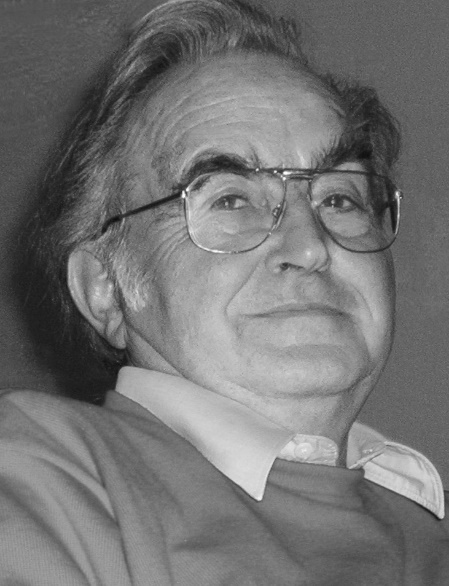 |
The Thuringian State Observatory mourns its former director Professor Dr. Josef Solf, who passed away on December 31, 2023, just a few weeks before his 90th birthday, in Jena. |
Josef Solf had a significant impact as a scientist and institute director in Heidelberg and Tautenburg. During his time in Heidelberg at the Max Planck Institute for Astronomy, he developed spectroscopic instrumentation for the telescopes at the newly emerging German-Spanish Astronomical Center on Calar Alto. With them, he achieved recognized scientific success in the field of bipolar phenomena in star formation and development. As director of the Thuringian State Observatory, he contributed to the expansion of the institute and the modernization of the 2-meter Alfred Jensch telescope and its instrumentation.
Josef Solf was born on February 5, 1934, in Worbis in the Eichsfeld region and grew up there with his five younger brothers in "Solf's Mill." His father was a very influential figure in his life. Early on, he sparked numerous interests in him – in mill technology, music, religion, photography, philosophy, and physics. He attended boarding school in Heiligenstadt, where he graduated in 1952 with a humanistic diploma. He then began studying mathematics at the University of Jena. Driven by his big question "Am I finished yet?" he changed direction and studied philosophy, theology, and art history from 1953 to 1962 at the Jesuit universities in Berlin, Frankfurt, and Munich. As his question remained unanswered and the curiosity to discover the world was inherent in him, he changed his career path again in 1962 and began studying mathematics, physics, and astronomy – first in Karlsruhe, then in Heidelberg, where he graduated in 1967 with a degree in physics. He completed his PhD in nuclear physics there in 1969.
From 1969 to 1994, Josef Solf worked as one of the first scientific employees at the newly founded Max Planck Institute for Astronomy in Heidelberg, dedicating himself to the development of astronomical instruments and the study of star development.
He played a crucial role in establishing the institute's new observatory at Calar Alto in southern Spain. His focus soon turned to the development of spectroscopic instrumentation for the new telescopes. He gained knowledge during research stays at the Lick Observatory in California in 1971 and 1974, among others. A significant achievement was the Coudé spectrograph for the 2.2-meter telescope, a vertical setup through the entire dome building, which relied on a single mirror outside the telescope and undoubtedly represents one of the most powerful instruments of its kind. As a similar device promised no greater efficiency for the 3.5-meter telescope, interest there focused on a large Cassegrain spectrograph. Together with the institute's co-director, Guido Münch, Josef Solf developed the TWIN spectrograph, which became one of the workhorses at this telescope for a long time. He also converted a standard Boller & Chivens spectrograph according to his own design into a unique "echelle" spectrograph, which allowed imaging the entire spectral range from UV to near-infrared with a single exposure.
The commissioning and initial use of these devices made Josef Solf an observing astronomer. Initially, he observed late M-stars and Mira variables. His long-slit, high-spectral-resolution images of the prototypical massive star S106, together with Uri Carsenty, first revealed the blue and red shifts of the gas in its opposing extended shells, convincingly demonstrating the bipolar structure of these objects. This was followed by studies of bipolar outflows and jets from evolved stars such as R Aqr and the nova HR Delphini, which he also made the subject of his habilitation thesis in 1983, as well as work on bipolar planetary nebulae with his doctoral student Luis Felipe Miranda. He then turned to detailed spectroscopic studies of bipolar outflows and Herbig-Haro jets from young stars and their bow shocks together with Karl-Heinz Böhm. The method of spectro-astrometry that he developed to study these jets near the source was and is so successful that it was sometimes called "Solf's method" by some. In 1990, the University of Heidelberg appointed Josef Solf as a professor.
When Josef Solf received a call to a professorship in astronomy at the Friedrich Schiller University of Jena in 1994, combined with the position of director of the Thuringian State Observatory in Tautenburg, he returned to Jena, which he had left as a student in 1953. As a member of the Faculty of Physics and Astronomy, he was involved in teaching and scientific training of students until his retirement in 1999. As director of the Thuringian State Observatory Tautenburg, he contributed to the expansion of the institute and the modernization of the 2-meter Alfred Jensch telescope and its instrumentation. The construction of a new research building provided much-needed space for workrooms for scientists and administration. Laboratory space was also created for the electronics lab, as well as climate-controlled rooms for archiving the extensive collection of photographic plates of the Thuringian State Observatory and for their digital processing. An important concern for Josef Solf was the modernization of the 2-meter Alfred Jensch telescope, the largest optical telescope on German soil, which, through the renewal of its drives, enabled digital control. He designed the conversion of the high-resolution Coudé spectrograph into a Coudé echelle spectrograph, with vastly increased wavelength coverage, and conceived a low-resolution spectrograph for the Nasmyth focus of the telescope. With the active support of his former institute, the Max Planck Institute for Astronomy in Heidelberg, all focus stations received powerful CCD cameras as detectors.
After his retirement, Josef Solf remained active in the Catholic church choir in Jena. For many years, he was involved in the hospice association, accompanying numerous people in their darkest hours. He had three sons with his beloved wife Gisela, who passed away in 2017.
The Thuringian State Observatory has not only lost its former director and an outstanding scientist with Josef Solf but also a modest, energetic, and highly esteemed colleague. It will preserve his memory with honor.

